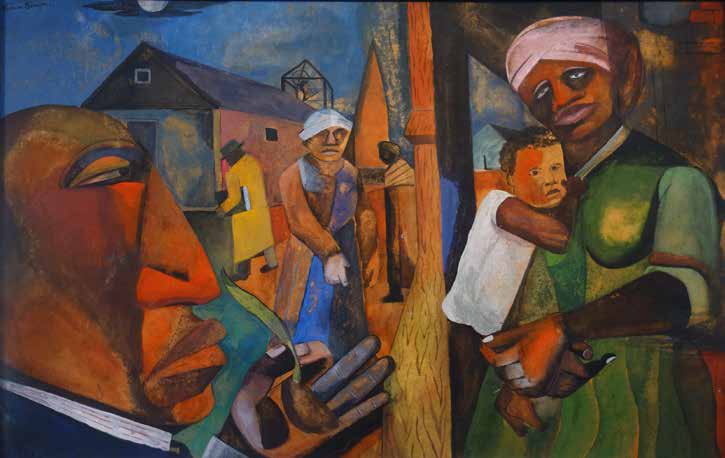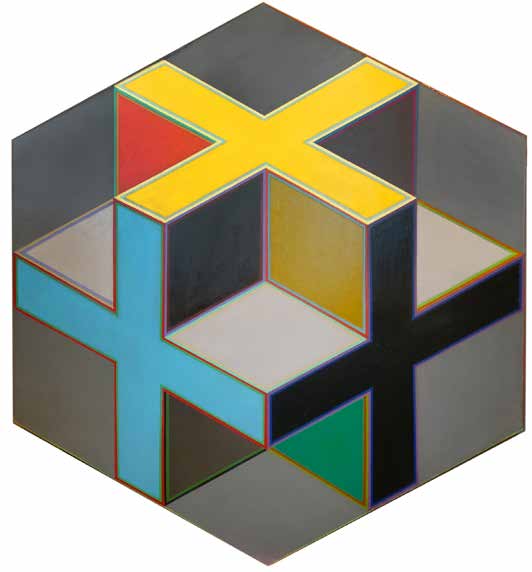In the late 1960s my husband, Ed McCormack, and I started spending many hours walking from one gallery to the next, along Madison Avenue and 57th street. Ed introduced me to many special galleries and over the years we developed a route of our favorites. I remember Cordier & Ekstrom along Madison where we saw works by Man Ray and Richard Lindner, among others. Then there was Willard Gallery where we saw mystical works by artists such as Mark Tobey and Morris Graves. It was always so special to anticipate the next new show at our favorite galleries.
During our adventures we also stopped at the Whitney Museum and MoMA, (which at that time occupied the same building) where I first saw the works of important Black artists from and influenced by the Harlem Renaissance period like Jacob Lawrence and Romare Bearden. Ed admired these works for their “improvised qualities that [he] also saw in Jazz musicians.” Ed was painting figurative pieces in those days and these works gave him great inspiration.

Jacob Lawrence, is best known for his Migration series, depicting the massive movement of African Americans from the southern states to the urban north after the end of slavery. Ed also first saw Lawrence’s works in a museum (Lawrence was the first African American to be acquired by MoMA), and says of seeing his work, “I always loved how he combined the decorative effects of abstraction with social commentary. He integrated humanism and abstraction in a way that few artists have ever done.”
Romare Bearden, who didn’t find fame as easily as Lawrence, struggled in his early years. Ed calls Bearden’s earlier works “what a doggedly ambitious painter can go through as he explores and discards influences – the arduous process jazz musicians call “paying dues.” His earlier works were good but “derivative of the frescoes of the Mexican muralist Diego Rivera and the temperas of his friend Lawrence”. However as soon as Bearden started experimenting with collages, he found his own voice. One of his major innovation was merging photo-images of African masks with the faces of local people, particularly in Harlem where he lived.
In later years we began to visit Bill Hodges Gallery on 57th Street after he opened in 1993 and discovered that his gallery was known for representing all the great black artists of the Harlem Renaissance period, as well as important contemporary artists. Not only was it an important venue for African American artists to show their work, but his gallery represented many of the artists making Black history available, in visual terms, to the general public, with many narrative artworks depicting the joys, sorrows and difficulties particularly encountered by African Americans.
Bill Hodges also represented two artists that we had come across one day while visiting an outdoor art show in the village in the early 1970s. We saw the work of Joseph Delaney who painted city scenes. Ed explained that Joseph was the brother of a more famous artist named Beauford Delaney, both Harlem Renaissance artists who produced bold colorful paintings of African American life.

Charles White was another important Black artist at Bill Hodges Gallery, whose work Ed first saw in a book called “The Insiders.” The premise of the book was based on going against the popularity of abstract expressionism of the 1960’s by featuring figurative artists whose works were imbued with emotional content. Influenced by the Harlem Renaissance artists at a young age, White produced bold, black and white, iconic graphite prints of African Americans and was also known for his murals.
After our hiatus in publishing Gallery&Studio, I was working on the new distribution list for our first non-profit issue of our printed magazine and was very disappointed to learn that Bill Hodges was no longer on 57th Street. I thought to myself, “How quickly things change when you are not looking.” After a little more search on the computer however, I learned that he will be shortly moving to a new location in Chelsea, continuing to make history and African American art available for us all.





Dear Jeannie,
I what to thank you for printing Anne Rudder’s “The Island Ghosts.” I very much appreciate your support. WSAC hasn’t forgotten you and you wonderful magazine.
Cheers,
Margo Mead
WSAC Co-President